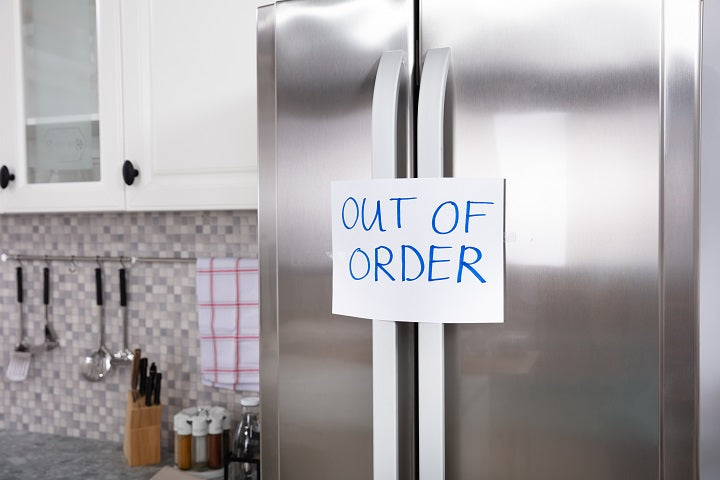If you were asked what the most popular room in your home is, you’d likely say the kitchen. This is where most families spend the majority of their time. Breakfasts are eaten together here on the weekends, when school and work don’t force you to grab food and run. The kids may camp out at the kitchen table after school to work on their homework, play on their tablets while enjoying a snack, or just to chat with each other or friends who may have come over. And we can’t forget all the meals cooked there. It’s where Thanksgiving dinners get their start — before all the tasty dishes are put out on the dining room table, they’re prepared right in your own kitchen and made with love.
With all this time in the kitchen, it’s no surprise that your family depends heavily on your cooktop, fridge, dishwasher, and garbage disposal every day. When these appliances aren’t working like they should, you may have food that’s gone bad in a warm fridge, meals that can’t be prepared on your stove, dishes that can’t be washed in your dishwasher, or scraps that can’t be pushed through into the garbage disposal.
Fortunately, the average homeowner can help prevent many of the most common kitchen appliance problems your family may face. Read on to learn more.
Preventing a clogged garbage disposal
When a meal is finished, many people scrape leftover food from plates into the garbage disposal. When this appliance is working like it should, all you have to do is flip the switch, and leftover food debris gets ground up and doesn’t take up space in your kitchen trashcan (or make it smelly). When the device isn’t working like it should, you have a problem on your hands.
The most common garbage disposal problem involves a clogged/obstructed device. To be sure this problem doesn’t happen in your home, never put the following items into your disposal: eggshells, coffee grounds, cooked pasta, batter, oils/fats/grease, bones, onion peels, nuts, or potato peels.
Preventing a warm fridge and spoiled food
Every homeowner fears it — a fridge that’s no longer keeping their food cold. If this has happened to you, it may have been right after you stocked up on milk, eggs, meat, and frozen foods.
To make sure your fridge continues to keep your foods safe and cold, first be sure that you’re using the correct temperature setting. If you’ve got young children in your home, you already know how curious they can be, especially when trying to peek into the fridge to see what yummy treats there may be. Make it a routine to check the temperature often to be sure it’s properly set and hasn’t been tampered with by little hands.
Additionally, be sure that you aren’t blocking the circulation vents in the fridge. If you’ve got any food items inside that are big and bulky — e.g., boxes of soda cans — be sure they’re placed in the fridge in a way that doesn’t block air flow to and from the vents. A blocked vent could cause your fridge to be too warm inside.
As a bonus tip, be sure to regularly clean the fridge’s condenser coils so they aren’t covered in dust, dirt, or pet hair. When these coils are coated in grime, they can prevent the unit from cooling properly inside. The coils are found underneath or on the back of the fridge.
Preventing a cooktop problem
When your cooktop isn’t heating up, you can’t prepare your meals and may have to resort to ordering food (which isn’t cheap and doesn’t fit into anyone’s budget these days). One of the most common problems with a natural gas cooktop is that the burners aren’t firing up.
If you have a natural gas range and can hear the igniter clicking when you turn the knob, the problem could be as simple as making sure there isn’t any residue left over from a pot that boiled over, or from food that dried on the cooktop.
If you have an electric range and have a burner that isn’t heating up, this could be the result of a frayed wire inside of the unit. This is something that will require the assistance of an electrician or professional appliance repair tech to resolve.
Preventing a dishwasher issue
Who has the time to wash their pots, pans, plates, and cutlery by hand? Nobody! So when your dishwasher isn’t draining like it should, you know it’s a problem that needs to be resolved sooner rather than later.
If you’ve noticed that there’s standing water inside your dishwasher, the first thing to do is cut off power to the unit via your circuit breaker. Next, remove the dishes from the appliance and use a large bowl or scoop to try remove the water so you can determine the cause of the clog/obstruction. Once the water is out, you may find that food scraps have blocked the drain. If you find them, remove them.
If this doesn’t take care of the problem, then the issue may be with your garbage disposal. Often, the drain line may have a backup inside, but running your disposal will push it through and help the water inside the dishwasher to empty.
To avoid this issue altogether, make sure your family is carefully clearing their plates and cookware before putting them into the dishwasher.
Want more helpful homeowner tips?
Check back often as we frequently update our blog library with helpful homeowner tips and tricks. Do you have questions about our home protection programs? Give us a call at any time, or you can chat with a customer service representative by clicking the “Click to Chat” tab on the right side of the page during standard business hours.


